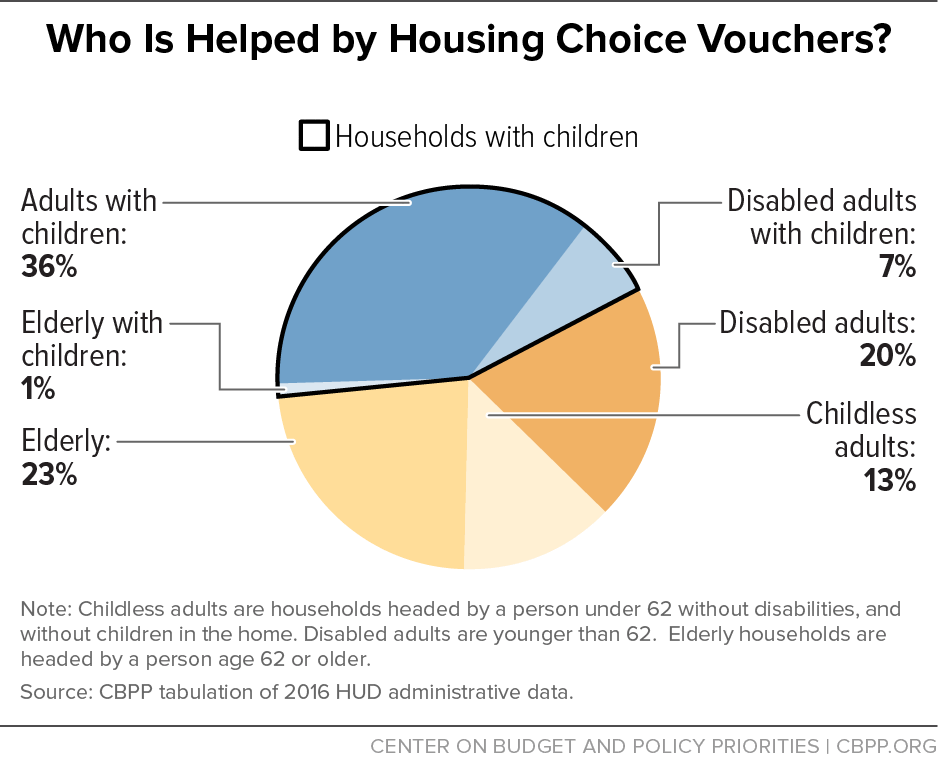BEYOND THE NUMBERS
This is the first in our “Housing Vouchers Work” blog series, which provides the latest facts and figures about the Housing Choice Voucher program, the largest rental assistance program to help families with children, working people, seniors, and people with disabilities afford decent, stable housing.
Created in the 1970s, the “Section 8” Housing Choice Voucher Program helps low-income families pay for housing that they find in the private market. This successful program helps millions of Americans find and keep decent housing, but a lack of funding threatens to leave thousands of vulnerable families without a place to live.
A network of about 2,200 state and local housing agencies run the federally funded program. More than 5 million people in 2.2 million low-income families use vouchers (see chart).
Vouchers sharply reduce homelessness, housing instability, overcrowding, and other hardships. They lift more than a million people out of poverty, and they give families an opportunity to move to safer neighborhoods with better access to quality schools and other household needs.
These effects, in turn, are closely linked to educational, developmental, and health benefits that can improve children’s long-term prospects, enable frail seniors and people with disabilities to live in the community and avoid institutionalization, and reduce costs in other public programs.
Federal rules ensure that vouchers go to the families that need them most. Seventy-five percent of new households admitted each year must be “extremely low-income.”
In most voucher households that include a person who can reasonably be expected to work, that person does work. In 2016, at least one member of the household was working or had worked recently in 69 percent of non-elderly, non-disabled households using vouchers, while another 9 percent of households using vouchers were likely subject to a work requirement under the Temporary Assistance for Needy Families (TANF) program.
But even as rising numbers of low-income families struggle to pay rent and make ends meet, funding limitations leave 3 in 4 eligible households unable to receive federal rental assistance.
Yet, vouchers for about 130,000 families will be unavailable in 2017 if policymakers don’t increase funding to keep pace with rising rents and the new vouchers that the President and Congress have funded in recent years. Unfortunately, President Trump's budget proposal for 2018 would eliminate rental assistance vouchers for some 200,000 low-income households.
Cuts in vouchers will increase and prolong homelessness and other hardships for seniors, people with disabilities, and families with children. These proposed cuts contrast with the statements by President Trump and Housing and Urban Development Secretary Ben Carson affirming the Administration’s commitment to invest in cities and help struggling people stay off the street.
Helping many more low-income families to pay the rent should be a major goal of anti-poverty policy. Fully funding existing housing vouchers and raising the caps on non-defense discretionary spending (in which voucher funding is included) in 2018 to enable more families to have a stable, affordable home is the clearest path to achieving this goal.

